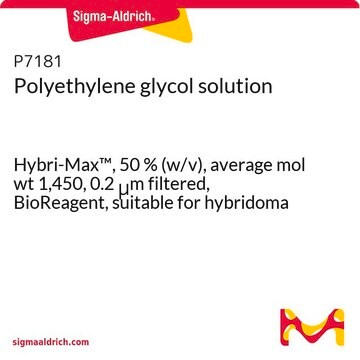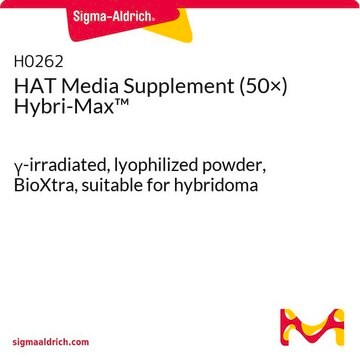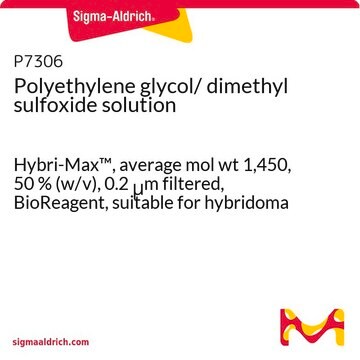P5402
Poli(etilenglicole)
average mol wt 1,450
Sinonimo/i:
PEG
Scegli un formato
Scegli un formato
About This Item
Prodotti consigliati
Stato
powder, flakes, or chunks
PM
average mol wt 1,450
pH
4.5-7.5
Viscosità
26.5 cSt (210 °F)
Punto di fusione
43-46 °C
Solubilità
water: soluble (approximately 720 mg/ml, 20 °C)
Densità
1.0919 g/mL at 60 °C
1.0761 g/mL at 80 °C
Stringa SMILE
C(CO)O
InChI
1S/C2H6O2/c3-1-2-4/h3-4H,1-2H2
LYCAIKOWRPUZTN-UHFFFAOYSA-N
Cerchi prodotti simili? Visita Guida al confronto tra prodotti
Applicazioni
- Composite scaffolds for bone regeneration: A study describes the development of a composite scaffold incorporating polyethylene glycol, gellan gum, and hydroxyapatite, with added ginseng derived Compound K, indicating potential applications in bone regeneration (Thangavelu et al., 2024).
- Enhanced wound healing: Research discusses AI-driven optimization of PCL/PEG electrospun scaffolds, highlighting their improved efficacy in in vivo wound healing applications (Virijević et al., 2024).
- Catch and release cryogels: Redox-responsive cryogels made from polyethylene glycol, which can capture and release proteins and cells, suggesting their potential in biomedical applications (Calik et al., 2024).
- Antibacterial hydrogels for wound dressing: A study presents light-degradable nanocomposite hydrogels containing polyethylene glycol, aimed at antibacterial wound dressing applications, demonstrating innovative uses in medical materials (Fang et al., 2024).
Codice della classe di stoccaggio
11 - Combustible Solids
Classe di pericolosità dell'acqua (WGK)
WGK 1
Punto d’infiammabilità (°F)
Not applicable
Punto d’infiammabilità (°C)
Not applicable
Dispositivi di protezione individuale
Eyeshields, Gloves, type N95 (US)
Scegli una delle versioni più recenti:
Certificati d'analisi (COA)
Non trovi la versione di tuo interesse?
Se hai bisogno di una versione specifica, puoi cercare il certificato tramite il numero di lotto.
Possiedi già questo prodotto?
I documenti relativi ai prodotti acquistati recentemente sono disponibili nell’Archivio dei documenti.
I clienti hanno visto anche
Active Filters
Il team dei nostri ricercatori vanta grande esperienza in tutte le aree della ricerca quali Life Science, scienza dei materiali, sintesi chimica, cromatografia, discipline analitiche, ecc..
Contatta l'Assistenza Tecnica.




